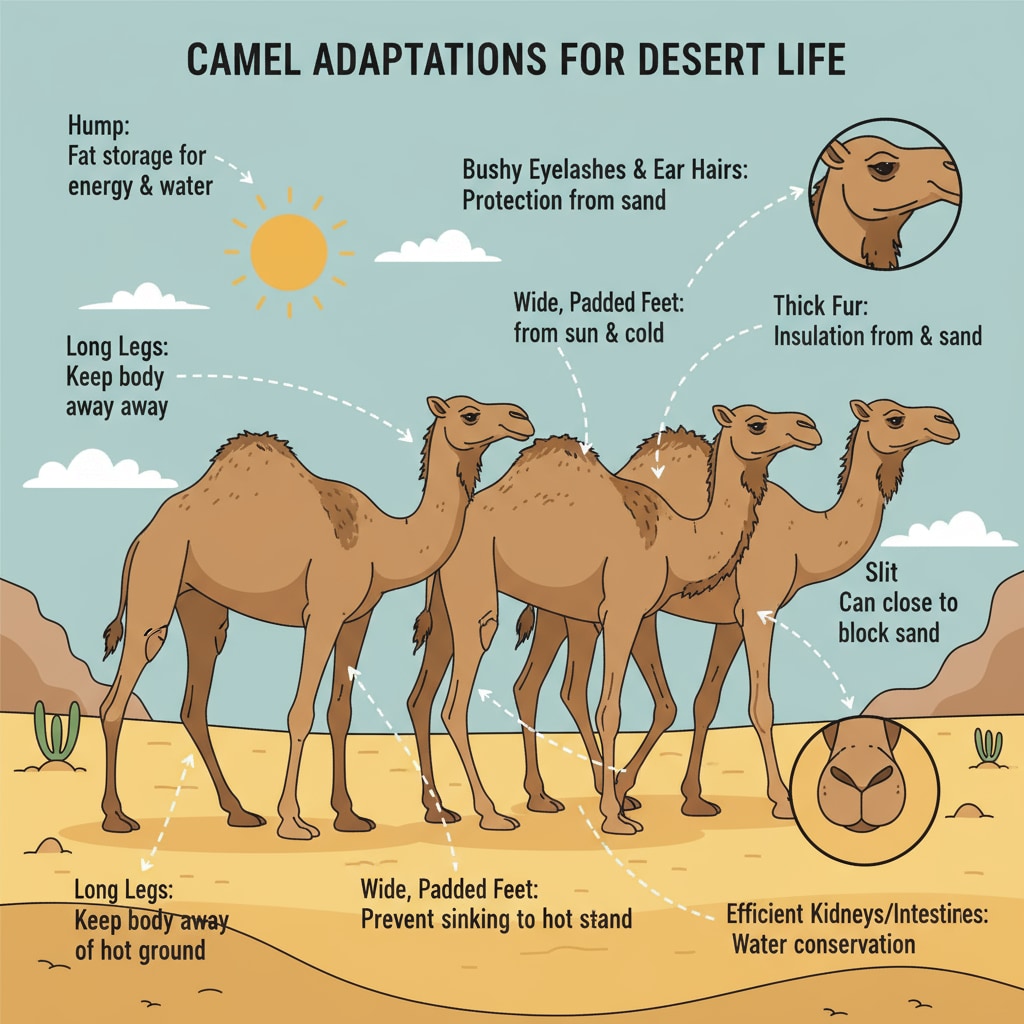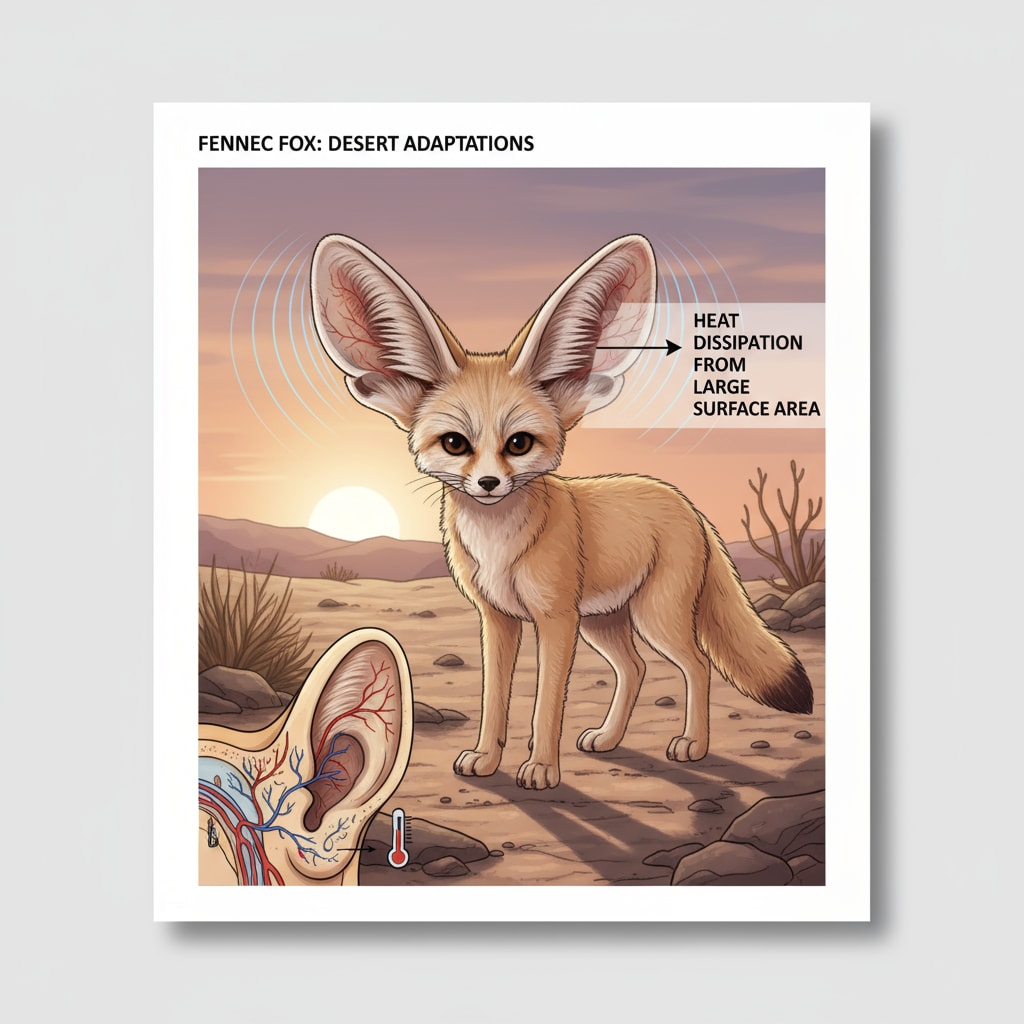Desert animals’ survival adaptations and evolutionary traits are a fascinating subject that can offer invaluable lessons in K12 science education. These remarkable creatures have developed unique ways to thrive in one of the harshest environments on Earth.

The Wonders of Desert Animal Adaptations
Desert animals have evolved a plethora of adaptations to cope with the extreme heat, scarcity of water, and limited food resources. For example, the camel is a prime example of an animal perfectly adapted to desert life. Its humps store fat, which can be metabolized into water and energy during long periods without food or water. This adaptation allows camels to travel great distances across the desert. Camel Adaptations on Wikipedia

Evolutionary Traits Shaping Desert Life
The evolutionary traits of desert animals are a result of millions of years of natural selection. Take the fennec fox, for instance. Its large ears not only enhance its hearing but also serve as a cooling mechanism. The thin skin on its ears allows for efficient heat dissipation, enabling the fox to survive in the scorching desert heat. These traits have been gradually refined over time to ensure the species’ survival. Fennec Fox Evolution on Britannica
In addition to physical adaptations, many desert animals have also developed behavioral traits to aid their survival. Some animals are nocturnal, emerging at night when the temperatures are cooler and the risk of dehydration is reduced. This behavior helps them conserve energy and water.
By studying these desert animals’ survival adaptations and evolutionary traits, K12 students can gain a deeper understanding of the principles of evolution and the importance of adaptation in the natural world. It also instills in them a sense of wonder and respect for the diverse life forms that inhabit our planet. Readability guidance: The key points here are the diverse adaptations of desert animals, both physical and behavioral, and how they relate to evolution. Each example is a separate point, and we use transition words like ‘for instance’ and ‘in addition’ to connect ideas.


